Stay in touch
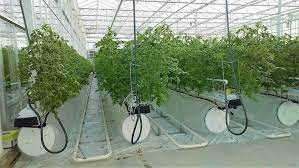
Is it practical to build semi-closed greenhouses?
In the world of agriculture, new technologies and innovations aimed at increasing efficiency and improving growing conditions for plants emerge every year. One such innovation is the fifth generation greenhouses. They are modern structures designed to provide optimal conditions for plants inside. But is it worth investing in them in certain climatic conditions?
The main feature of fifth generation greenhouses, or as they are correctly called, semi-closed greenhouses, is the use of cooling systems with wet pads. These systems ensure an efficient cooling process inside the greenhouse, which is particularly beneficial in climates with low humidity. In such conditions, where the humidity is less than 60%, fifth generation greenhouses can be highly effective and bring significant benefits.
However, in countries with climates where humidity exceeds 60%, the efficiency of cooling systems using wet pads decreases. This is because at higher air humidity, wet materials are not able to effectively cool the air inside the greenhouse. In such cases, investing in fifth generation greenhouses may simply result in overpayment, as the cooling systems cannot operate at maximum efficiency.
Therefore, the construction of fifth generation greenhouses in countries like Ukraine, Kazakhstan, and other countries with similar climatic conditions may raise doubts. Before deciding to build such greenhouses in these regions, it is necessary to carefully analyze climatic data, including air humidity, and assess how effectively the cooling systems with wet pads will function.
However, it is worth noting that fifth generation greenhouses have important advantages and high efficiency in suitable climatic conditions. They provide more stable and optimal conditions for plant growth and development, which can lead to increased yields and improved product quality. This is achieved by maintaining carbon dioxide levels inside the greenhouse without the need for ventilation windows, as is commonly used in traditional greenhouses for cooling purposes.
In conclusion, the feasibility of constructing fifth generation greenhouses depends on the climatic conditions of a specific region. In countries with low air humidity, these greenhouses can be highly effective. However, in more humid climates like most post-Soviet countries, their efficiency may be limited.
Feel free to contact us for more information, and our team will provide guidance on what is best for you!
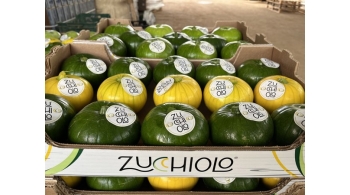
A Novel Greenhouse Vegetable for the European Market
Zucchiolo, a crossbreed between zucchini and cucumber. The plant combines characteristics of both vegetables and is suitable for greenhouse cultivation. With high yields of 9-11 kg/m² and adaptable planting densities, Zucchiolo offers a potential yield exceeding 100,000 kg per hectare. Its tricolor varieties include dark green, light green, and yellow options. Zucchiolo can be consumed fresh or cooked, with a soft texture and no thorns, and has a post-harvest shelf life of up to three weeks outside the refrigerator. Its versatility and unique features make it a remarkable addition to the European market.
Sourse: Hortidaily
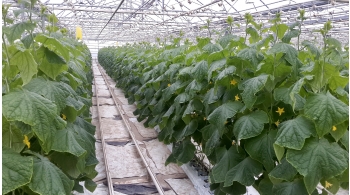
Development of Greenhouse Farming in Ukraine: Benefits and Challenges
The Ministry of Agrarian Policy and Food of Ukraine has started developing grant programs for the creation or development of greenhouse farming or horticulture, which is an important step in supporting the industry that previously received insufficient support from the state. However, according to the Ministry, only 11 grants have been issued so far for greenhouse construction, and many entrepreneurs do not participate in this program due to uncertainty with electricity supply.
UKAB analyst Maxim Gopka notes that the greenhouse market in Ukraine is undersaturated, and greenhouse vegetables are becoming increasingly popular among the population. Greenhouse owners also have advantages due to higher yields and the ability to grow organic vegetables year-round.
However, Anatolii Kinakh, President of the Ukrainian League of Industrialists and Entrepreneurs, notes that the state focuses on supporting large farms, not paying enough attention to small and medium-sized producers. He also believes that free educational webinars for entrepreneurship and business organizations are needed to expand grant opportunities and attract more participants to the industry.
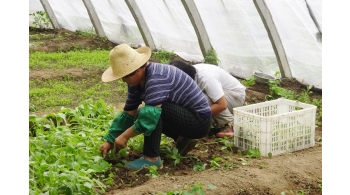
Due to the war in Ukraine, around 35% of greenhouse farms have stopped operating
Last year, prices for greenhouse tomatoes and cucumbers were at record highs. However, not many greenhouse complexes took advantage of these prices with the onset of cold weather, as even the high cost of vegetables did not cover the production costs that had risen due to the energy crisis.
At the end of 2022, the issue of high prices for energy carriers was compounded by problems caused by attacks on the energy infrastructure by the Russian occupying army. As a result, many greenhouse complexes in Ukraine decided not to continue production during the winter season.
"Last year, the price of gas was indeed high, and this increased expenses. Of course, war brings difficulties, as it creates an imbalance in demand for products on the market. Also, until February, we had problems with electricity supply, which is important for the greenhouse business. For greenhouse farms, costs for logistics, fuel, and packaging have increased. There is an example where large greenhouse complexes switched to growing tomatoes instead of cucumbers because cucumbers require more energy costs, even though they grow faster," says Maxim Hopka, an analyst at the Ukrainian Club of Agricultural Business (UCAB).
"Indeed, the market has shrunk because there are fewer consumers - people have left the country. In addition, consumers' incomes have decreased. Accordingly, production has also decreased because the market does not need so much produce," says economist Andriy Yarmak from the Investment Department of the UN Food and Agriculture Organization (FAO).
According to Yarmak, high energy costs have forced greenhouse growers to optimize their season by focusing on minimal greenhouse heating, which also leads to a reduction in production. But this trend is also happening in parallel with a decrease in demand
According to the Ukrainian Union of Industrialists and Entrepreneurs (USPP), about 35% of greenhouse farms have stopped operating due to the war. Many of them experienced economic difficulties in 2021, when there was a crisis in gas price hikes.
Heating greenhouse farms with gas is expensive. Therefore, many producers in Ukraine are switching to alternative fuels, such as biomass, building bio-power plants, and so on. The cost of electricity has also increased by about 40%, which is one of the main cost components for greenhouse growers - growing seedlings requires maximum lighting. Kinakh emphasized that greenhouse farming is one of the most energy-intensive areas in agriculture.
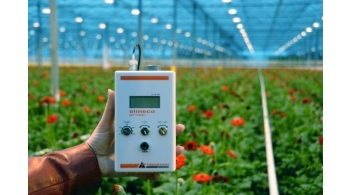
Boosting Plant Growth: The Role of CO2 Dosage in Greenhouse Horticulture
Carbon dioxide (CO2) is a colorless, odorless gas that plays a vital role in plant growth. In greenhouse horticulture, CO2 is used to enhance the photosynthesis process, which is essential for plant growth and yield. Photosynthesis is the process by which plants use sunlight, water, and CO2 to produce energy-rich molecules such as sugars and starches, which they use as food.
CO2 is one of the raw materials required for photosynthesis. However, in a typical greenhouse, the amount of CO2 is often less than what plants need to perform optimally. Therefore, greenhouse growers use CO2 dosing to supplement the natural levels of CO2 in the air. CO2 dosing involves adding extra CO2 to the greenhouse environment to increase the concentration of CO2 in the air. This is typically achieved by using CO2 generators or burners, which produce CO2 by burning natural gas or propane.
The benefits of CO2 dosing in greenhouses are numerous. First, CO2 dosing can increase the rate of photosynthesis, leading to faster plant growth and higher yields. Secondly, CO2 dosing can help plants to use water more efficiently, reducing the need for irrigation. Thirdly, CO2 dosing can help plants to tolerate higher temperatures, allowing growers to maintain optimal growing conditions even during periods of hot weather.
However, it is important to note that CO2 dosing should be done in moderation. Too much CO2 can be harmful to plants, and excessive levels of CO2 can lead to reduced growth, stunted development. Therefore, it is essential to monitor CO2 levels regularly and adjust dosing accordingly. By supplementing natural levels of CO2, greenhouse growers can create an optimal growing environment that promotes healthy plant growth and development. However, it is crucial to monitor CO2 levels regularly and adjust dosing accordingly to avoid harmful effects on plant growth.

Don’t give up, just do it: Building rooftop greenhouse in Ukraine during the wartime
A fully equipped rooftop greenhouse was recently commissioned by Perspekta Group team in Kyiv area, Ukraine. It took almost two month of building, in cold winter weather while overhearing missile attacks, for the project to be done.
The greenhouse is equipped with such systems as LED lighting, high pressure misting system, energy-saving screening system, irrigation and heating which allow control the climate and grow crop all year-round. Combination of hydroponic vertical towers and raised beds with different growing substrate allow flexibility in types of crop and methods to grow.
Goals and benefits of rooftop greenhouse reached:
- Space efficiency: A rooftop greenhouse maximizes the use of available space.
- Year-round growing: Rooftop greenhouses provide an ideal environment for growing plants. This allows for a constant supply of fresh produce.
- Increased food security: With a rooftop greenhouse, building owners can grow their own fresh produce, reducing their reliance on imported produce. This is particularly important in Ukraine with limited access to fresh and healthy food options.
We already are working on the next project to be built on the rooftop, also fully equipped for year-round growing. Fingers crossed; the peaceful time will come soon. We do believe a rooftop greenhouse will be the trend all over the country when peace is there.
Perspekta Group is the leading greenhouse builder in Ukraine. The company has earned recognition for undertaking large, complex projects, fostering innovation, embracing traditional and emerging technologies, and making a difference for their clients. Simultaneously, the residential division of Perspekta has provided functional beautification to many of the nation’s most desirable estates.
By focusing on Design-Build project delivery, Perspekta team brings best the world has to offer in growing technologies to Ukraine, in order to create a lasting positive legacy.
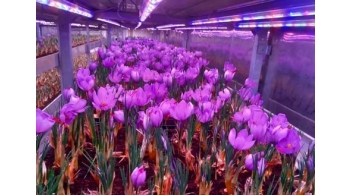
Growing saffron goes vertical
A new growing system initiated in Italy shows that growing saffron can be easy and profitable by growing vertically in the containers. Now saffron, one of the most expensive and rare spice, can be grown in hydroponic vertical system, a container farm.
"To get to the amount of 2 kg in dried pistils on a yearly basis in the open field, you'd at least need about 1,000m2. However, our container equals that number with its multiple layers. Besides that, the product quality is outstanding, as we don't have the same risks as open-field growers do." - Daniele Bertocchi, owner of Italian container company says.
The chemical analysis has shown that the parameters of bittering, coloring and flavoring properties are far within the first category of conventionally grown saffron. To illustrate the outcome; the coloring power, expressed as 'crocin,' stood at 280 ± 34; the bittering power, expressed as picrocrocin, stood at 111 ± 16; and the flavoring power, expressed as 'safranal,' stood at 29.9 ± 4.0.
Meaning that these results all fall into the minimum requirements for the first category of saffron production. With that said, you can install in you back yard a container and make money by supplying rare expensive spice to the restaurants around, for instance!
Sourced at hortidaily.com
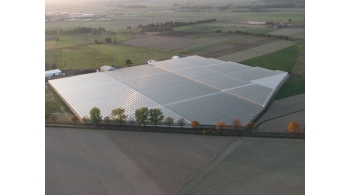
Practical recommendations for choosing a site for greenhouses
We talk about the important nuances that you can take into account when choosing a site for maximum greenhouse efficiency. Briefly they are: solar activity, shading, zoning, wind and access to water and electricity. More details below.
Location
First, let's start from the place where it is allowed to build a greenhouse according to state norms. It is important to take into account the distance from power lines, gas pipes, etc. Tree uprooting is often not allowed or too expensive thus it's best to look for treeless areas.
Lack of access to water can be a problem. The quality of the water is not as important becasue it can be treated with purification processes.
Electricity must be available. Determining the required voltage is also key in the planning. Most greenhouses require 480V 3-phase, which is not available in all areas or can be expensive to connect.
Internet access and a satellite connection are also important because most systems use the Internet to signal danger or system’s failure.
A distance of the greenhouse for workers is important factor as well. If they have to spend more than 1 hour to get to work, it will be difficult for you to keep workers. This is a serious problem if you want to grow crop successfully and have an efficient staff.
Also take into account the distance to the market or other sale points of your products. You will save time and fuel if you are closer to your distributors or customers. It is often the deciding factor for product sales and business development.
Climate conditions
Shading/percentage of sunshine at any time of the year is an important factor in plant growth that you can use for your profit or additional cost.
Solar activity and shading varies from place to place, especially in mountainous and wooded areas. Solar activity is essential for sufficient growth and passive solar heating.
If the site is shaded during the winter, this can result in lost production or increased lighting costs. In summer, some shading is usually not a significant disadvantage and even benefits the greenhouse by reducing heat gain and preventing overheating. Many growers use shading and cooling strategies to help keep their greenhouse cool in the summer, and it's cheaper than the extra cost of lighting and heating.
Maps and weather websites such as NREL or NASA can give you an idea of the overall light levels in your area. From there you can get more detailed information about a particular site by evaluating anything that might obscure the greenhouse (called obstructions), such as buildings or neighboring trees.
If there are obstacles nearby, we recommend considering their effect on the greenhouse. This can be done in several ways, such as using trigonometry and sketching surrounding objects. A tool called the Solar Pathfinder is another option, like getting a greenhouse designer or engineer to model your site and provide shadows.
Lux meters are another option, but it's usually difficult to give a complete picture of light levels throughout the year. The luxmeter measures the level of illumination in real time. To get a complete picture of the light in your location, a data logger or multiple measurements over a period of time is needed.
Wind is also an important factor. The higher the wind loads, the more expensive the greenhouse will be, because the structure must be stronger than in other regions.
Potentially wind also leads to more wear on the glazing or plastic film and increases wear on the structure. Air vents are especially sensitive to the "sail effect" - they are often torn off during strong gusts. Therefore, the ideal place for a greenhouse is protected from strong winds.
Check if the property is in a flood zone. Placing in the lowlands can cost the harvest.
If there is a hail problem in your area, engineers should take this into account when calculating roof loads and equipment specifications. The frequency and size of hail will greatly influence the choice of greenhouse cover.
Take note and forward to new achievements! If you have sites where you like to build a greenhouse but still doubt, please contact us. Perspekta team will be happy to help and suggest the best option available.
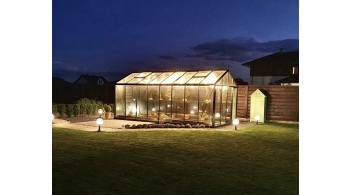
2023 New Year special deal for hobby greenhouses
Special deal for hobby greenhouse pre-order starts on Decmber 15th!
A 2023 New year offer, 20% discount on selected models of greenhouses or a 23% discount on a set of greenhouses and screening.
The number of greenhouses is limited! The promotion is valid until January 15, 2023.
Details vist perspekta.garden or request an offer!
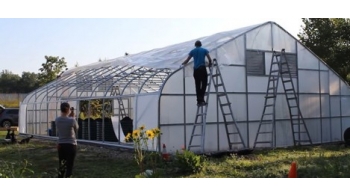
How to install a double-layer inflated plastic
One of the best and easiest solutions for energy-saving of plastic greenhouse is a double-layer inflated plastic. Double-layer inflated plastic works great at providing insulation, proper insulation can make the grower save on fuel costs. Here we are going to explain step-y-step process for those you plan to do it themselves.
Most common needed are: spring wire, a double aluminum channel in the infrastructure, a 6 mm anti-drip greenhouse plastic, a 6mm clear greenhouse plastic, an inflation blower fan, a polyester rope, screws or two-hole straps, and a jumper hose.
Safety. Place some spring wire around the perimeter of the structure within arms’ reach. This is because a grower or installer can immediately take action and secure the plastic if a sudden gust of wind picks up. Then, it’s important also to place ladders, one for both ends of the greenhouse, and one inside the structure, so that additional help can be given if the plastic needs to be better pulled. After all, it’s ready, it’s time to prepare the first roll of greenhouse plastics.
Use a round tube to skewer the roll of greenhouse plastic with the correct side facing down. Double-check the writing on the plastic to see which side is which. Then attach a rope, which needs to be long enough to extend from one end to the other of the structure. Roll the side of the plastic towards the middle where the folds meet. Then, make a little nub, tying the plastic around and folding it back. Make a knot on the top of the poly fold, and one double knot at the bottom of the plastic nub. This is crucial, as it prevents the plastic nub from catching on your bows as you’re trying to pull it across the structure.
Pull the first layer of plastic over the greenhouse. One person grabs the nub, and the other person pulls the rope from the other side of the structure. One person lifts the plastic while the other pulls the rope. This prevents damaging the plastic. At the same time, this needs to go along the center of the structure. If it goes slightly off, go up the ladder you put into the greenhouse previously, and adjust the plastic correctly. When the plastic has reached the other end, remove the knot and flatten the plastic.
If this was just a single-layer cover installation, then the plastic should be as tight as possible. However, since this is going to be inflated, it suffices to be sure that the plastic is well squared on the structure, and that any major wrinkle is pulled out. At this point, apply the spring wire, but without pulling too much. Later that this spring wire will be removed, but only after when the second layer will be secured. You can attach both layers of plastic with one run of spring wires. This saves cost on materials, but it mainly saves a ton of time, since we are not duplicating the process.
To apply the second layer, just repeat what was done for the first layer. It’s crucial to make sure that the folds are even on both sides so that there’s equal weight. Else, the plastic might get off the center of the structure, which would require you to start over.
Once the second layer has been pulled, untie the knot, and open the folds. Pull just enough on both ends to get rid of major wrinkles. Then, start placing the spring wire on the top channel, making sure that the plastic is square and that it is not too tightly secured. Then, it’s time to drop down the sides of the plastic. Do it during a calm day, then it’s quite an easy task. If there’s some wind though, brace yourself for quite an (annoying) challenge. Place the spring wire, and repeat the process for the other side of the greenhouse.
Inflating. When the second layer is on, it’s time to install the blower to inflate the space between the two layers of plastic. Re-visit where you want to install the blower, and unwire the plastic in that space, as you need access between the two layers. So, get up on the ladder again, and pull out some spring wire in the space of choosing. When everything is pinned and ready, it’s time to install the blower fan.
The fan should be 25-30 cm above the hip rail. Attach the mount bracket on the bow, with the orientation based on the pre-drilled holes in the fan. To put in the deflector now, go in between the layers where the hip rail plastic was left detached, and cut through the plastic.
When putting in the jumper hose, which will hang from the ceiling inside the greenhouse, you have to go out and take out a little spring wire, just enough to put your hand underneath the top exterior layer of plastic. Now, grab the jumper hose and remove the end seals. Squeeze the hose underneath both layers of the plastic, a little off the center purling. Slide the other hand in between the layers, and with a razor blade, push it through the most interior layer of plastic, through the hose hole, and use your fingers to widen the hole to fit completely through the first layer of plastic. Grab the end seals back, and put that on the hose, rotate to lock it. Now, do the other half with the same process. Secure the top plastic with spring wire – just one piece for both layers.
Now, the installation of the double-layer inflated plastic is done. To fully inflate the plastic, it might take up to 40 minutes- 2 hours, depending on the size of the greenhouse.
Source: Hortidaily.com
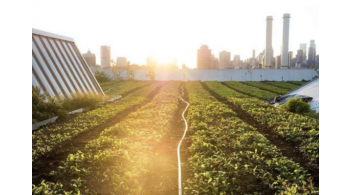
Growing rooftop with CO2 recycled from building ventilation quadruples growth
Researchers have grown a farm of rooftop vegetables bathed in the CO2-rich exhaust air from city buildings— and this idea boosted plant growth by an incredible 400%.
Whats the secret? A building vent! Many people will recognize these silver, mushroom-shaped structures that are visible on urban roofs: they form part of HVAC systems that pump out stale air and ventilate buildings with fresh air from outside. In buildings where lots of people live and work, the CO2 emissions from human respiration can reach surprisingly high levels, which is why these systems are needed to keep the air fresh and unpolluted.
The majority of urban dwellers spend their time indoors—and so cities have a potentially huge and steady supply of CO2 that’s going untapped. These wasted emissions can be used as a resource to create better-growing conditions for plants.
At each of the rooftop vents, the researchers planted neat rows of spinach and corn. Their vegetable patch was laid out in such a way that some plants were beside vents that emitted air from inside the building, while others were planted beside control vents that emitted regular atmospheric air. The plants were also exposed to more or less air power from the vents, to determine the impact of high winds on plants’ ability to use the CO2.
The distinguished growth speed and quality was seen where the exhaust was at most, which is 800-1000 ppm.
Rooftops typically take up 20-30% of urban space, area that goes mostly unused. Looking at the available rooftop area for growing food in the city of Boston where the study was based, the researchers found that if we grew vegetables there and then added CO2 building exhaust to the mix (and assuming also that crops of different varieties would benefit similarly), the city could in fact produce enough food to satisfy 290% of its own vegetable demand.
Read the complete article at www.anthropocenemagazine.org.
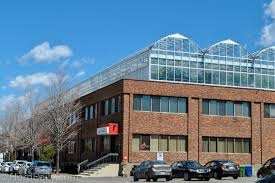
Greenhouses on the rooftops is a trend!
The first greenhouse on the roof of the building was built in Canada in 2009. The Lufa farm at that time realized the dreams of many companies that did not dare to take the first step. Since then, only Lufa has expanded 4 times! Now in its portfolio there are 4 industrial greenhouses for growing fresh vegetable products with a total area of almost 10 hectares.
This trend was picked up by only a few companies in the world, building greenhouses on roofs in France, Germany and the USA. Even though rooftop greenhouses are the obvious best solution for growing vegetables in million-plus cities, this trend is still not as common. And this is an incredible advantage for companies that just want to borrow this idea!
Take note! And our team will be happy to help with advising, design, implementation and building!
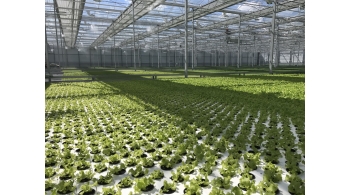
Greenhouse humidity is vital for plant and root health
Complexity of growing
Greenhouse humidity plays a vital role in plant and root health. On certain days, mist system helps to raise our relative humidity by about 25%, which in turn lowers greenhouse temperature by about 4C. This helps to avoid root pressure and keeps transpiration at an optimal level, so the plants don’t shut down and start using their reserve energy.
Mist serves differently in different season. For instance, during the sunny, dry months of May and June, growers can increase the humidity and bring the vents down without increasing the greenhouse temperature. By doing this, they can keep higher CO2 levels in the crop, which increases our rate of photosynthesis.
During the hot summer months, irrigation temperature starts to rise, which can lead to root issues. By keeping the air temperature cooler, this also keeps our leach water temperature cooler and provides more oxygen to the roots system. Healthy roots are an important piece in keeping pathogens like pythium and fusarium away.
Hot and dry conditions are also breeding grounds for pests. Another added benefit to controlling temp and humidity is the mitigation of pests and diseases. Bad bugs thrive in dry conditions, whereas the good bugs start to suffer. By keeping the humidity in control, it keeps our biological program in balance and also limits the spread of pathogens like powdery mildew, thus lowering our overall crop input costs.
Keep your crop safe and yield high, order misting systems at Perspekta!
Source: hortidaily.com

New Dubai residential project includes vertical garden
With sustainability being its core focus, innovation at the Maimoon Gardens is leading at the forefront of the project, revealing smart solutions and energy-efficient technologies to ensure green living throughout. Yousuf from Maimoon Gardens said: "We want to make something ultra-high tech in terms of building, at the same time amenities to reflect the luxury living that we want to provide."
Yousuf said about the development of a hydroponics farm, set to become an open space for residents to grow their own food and decompose their household waste.
He stated: “Greenhouses can be brought into urban living. This is the trend we want to set with everyone. It’s not a difficult process but it adds a lot of value to a development. The whole concept of the greenhouse is to have a very lavish podium where the hydroponic farm will be managed professionally by the people. The space is meant to educate residences about growing their own food.”
The Maimoon Gardens aspires to lend a resort-like feel to its inhabitants with inclusions like cascading waterfalls, a meditation garden, a community greenhouse with radiant cooling technology, a vertical herb garden in every apartment and much more keeping in mind the 360-degree wellbeing and healthier lifestyle of an individual.
Sourse: https://www.constructionweekonline.com/
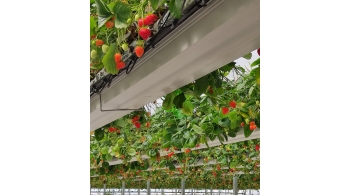
Strawberry grower increases production thanks to hanging kit
A Japanese farmer growing Beni Hoppe strawberries in his first production has obtained a total amount of 7.9 tons per 1,000 m2 in his greenhouse thanks to the use of hanging gutter systems. This is almost one ton more than the average soil yield of this type of fruit in Japan, which is about seven tons per 1,000 m2.
This farmer located in Japan has faced his first agricultural experience with strawberry betting on the hanging gutter system, on which they have grown almost 23,000 kilos of this fruit in just over 27,000 plants.
The system that has obtained such good results in Japan consists of a channel on which the Spacer Elevated is placed. This combination, together with the Out-flow and the fastening clips, provides the roots of the crops with very high aeration and oxygenation, as well as keeping them away from drainage and, therefore, from diseases and pests. Thus, they are healthier and stronger to produce more and higher quality fruit.
Ask our team about best suitable gutter systems for you! We help to improve your crop.
Source: hortidaily.com
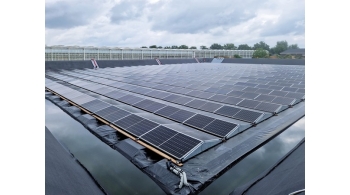
Dutch nursery goes green by covering water basin with solar panels
A floating solar farm is launched in the Netherlands.
The Rob van Vegchel Plant Nursery's water basin was entirely renovated and widened to accommodate more solar panels. It also got a new liner and slope protection.
The custom-built floating Solar system covers the entire water basin. The nursery boasts 810 solar panels of 455 Wp each, totaling 368.5 kWp. There are three inverters placed along the basin's long side.
That is perfect solution for greenhouse complexes to go green!
Source: hortidaily.com
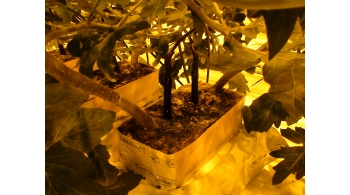
The importance of oxygen for the health and development of plants
Plants need oxygen to grow. Oxygen is absorbed by the roots in dissolved form and is important for the active assimilation of necessary nutrients such as nitrogen, phosphate, potassium, as well as for the accumulation of proteins and the production of dry matter. Lack of oxygen in irrigation water causes serious problems with the growth and development of plants.
The amount of dissolved oxygen also regulates the production of substances that suppress diseases and pests. It can enter water by diffusion from the atmosphere, but often irrigation water is stored in tanks, so there is little or no contact with air.
The physical maximum concentration of dissolved oxygen is 8.5 ppm for water with a temperature of 25℃, if growing in summer. In practice, a concentration of 3 to 5 ppm is often found in greenhouses. Plants suffer greatly from such concentrations, especially for fighting bacteria.
Dissolved oxygen injection is one of the effective methods for improving crop quality and health. There are various systems on the market that can be integrated into existing irrigation systems, so you can analyze and find the best solutions for yourself!
Perspekta keeps you up-to-date on modern growing in greenhouses. Are you planning to build a greenhouse? We develop, design and supply modern turnkey greenhouses.
Source of the Article: hortidaily.com
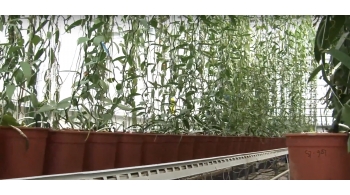
Growing vanilla in a greenhouse is profitable
One of the interesting and profitable ideas in the greenhouse business is growing vanilla. Unusual, isn't it? Just imagine, you can collect 8-10 tons from 1 hectare. And the cost of sales now reaches $ 700 per kg.
Due to global climate change, the traditional cultivation of vanilla has changed somewhat, there is already a shortage of this aromatic product for the food, perfume and aromatherapy industries. In nature, it is not easy to collect. However, it grows only near the equator, and in other regions, even if it grows, it does not bear fruit.
The cost is rising sharply, today it is one of the most expensive crops on the world market. And if you grow it in a greenhouse, you can significantly reduce the growing period (up to 50%), as well as increase yields several times and bring the farmer a high profit.
For greenhouses, this is a relatively new crop that is worth paying attention to, because growing vanilla is an interesting and profitable idea for business development. Of course, this is quite painstaking work, the trees bloom daily and pollination of plants will need to be carried out every day and by hand.
How do you like the idea? Want to try growing something new in a greenhouse? Contact us, we will tell you where to start.
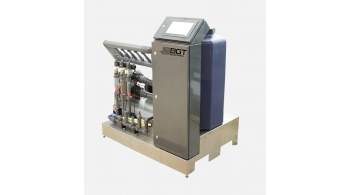
We offer an automatic fertilizer mixer
In these difficult times, we continue to work, and we urge you to continue your important mission - to grow delicious and healthy vegetables in greenhouses, providing our country with food.
We offer an automatic fertilizer mixer that performs precise mixing and application of fertilizers for any plant.
AMI Penta focuses on the need of plants for accurate fertilization and accurate acidity in irrigation water and at the right time.
The AMI Penta fertilizer mixer is easy to operate thanks to the well-organized menu, which is displayed on a large 10.1-inch touch screen. This minimizes the risk of human error.
Complete set and advantages of using the Senmatic AMI PENTA fertilizer mixer
Convenient touch display - Intuitive and easy-to-use menus provide a complete overview.
Software is provided for all groups, recipes and opening valves. This means no additional costs in the future if your needs change.
Supplied with mixing tank - ensuring the right combination of fertilizers and thus higher accuracy of EC and pH control
- Reliable - high-quality - durable mixer
- Flexible settings for many watering groups
- Advanced control of plant growth with sensors
- Ability to customize your own fertilizer recipes (up to 20)
- Many languages are available, and it's very easy to switch between them. This minimizes the risk of human error.
- Several trigger options with an additional selection of different sensors
Basic functions
• Actual names of recipes for fertilizers and irrigation groups
• Module-based, meaning flexible design for easy expansion
• Data collection and full control of the mixer using SuperLink for PC
• Flexible system settings - sensors can be used in irrigation groups
• 6 hour modes per day - 6 different watering strategies - providing automatic EC / pH adjustment every morning and evening
• Multiple alarm settings
• SIIP (Senmatic Intelligent Irrigation Program)
Automate splicing for a quality harvest!
If you have any questions, please call 095-734-1-33- Maria

We keep working. Contact information.
Dearest Friends,
Though there is no doubt difficult times have come to us all, these are the times we show the world what it means to be Ukrainian. The world is watching as we unite to protect our families, our land, and our right to be independent. Our courage, bravery, solidarity, and humanity may not be so easily seen in times of peaceful calm, but now the world sees our strength and that the truth stands behind us!
We will rebuild our cities and our nation with renewed strength.
Ukraine will become a prosperous, rich and independent country. This is our goal and mission.
In the meantime… the Perspekta team continues to work remotely. For all questions call the city number, we will call you back; text in managers by 095-09-05-888 or email to info@perspekta.ua.
Hold on, victory will be ours. Glory to Ukraine!